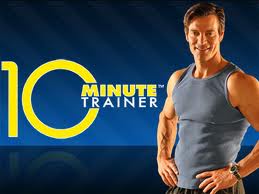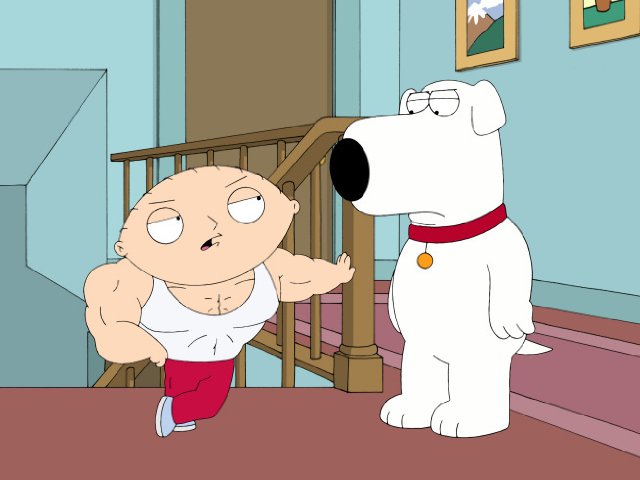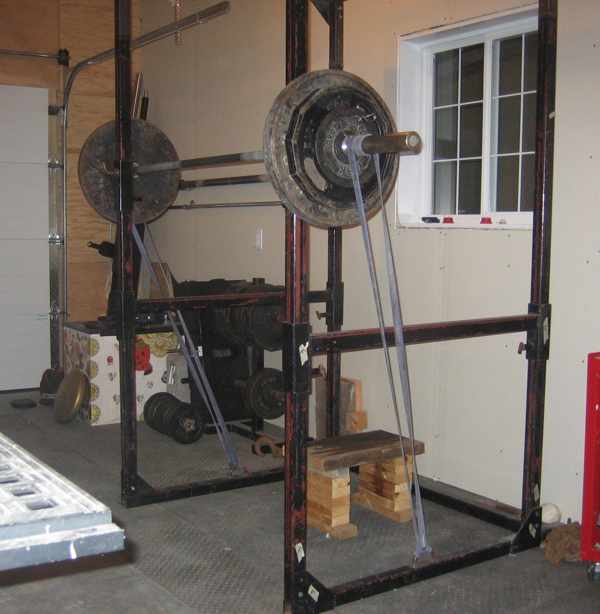Muscle Confusion? Legit or Nonsense Term?
The p90x system has popularized the phrase “muscle confusion” with claims, within the infomercial, referring to the “training science of muscle confusion.” My question is this: Is “muscle confusion” based in “training science?” Oh, and, what the heck is “training science?”
Here is a portion of the p90x pitch:
Alright, muscle confusion… sounds good. Let’s see what a search of scientific research journals pulls up for me:
Only 10 results – hmmmm – that’s not usually a good sign…
- Serotonin Syndrome – Muscle Rigidity and Confusion in the Older Adult.
- Renal failure in a patient with…
- Confusion between physicians & dentists about muscle-type pain…
- Preventing falls and fall-related injuries in hospitals.
Nothing related so, I’ll stop there and spare you the rest of the list.
Sadly, “muscle confusion” doesn’t seem to be based anywhere in science.
Well, let’s go ahead and see what kind of research supports “training science:”
- Basic science research and education: a priority for training…
- Training and career development in clinical and translational science: an opportunity for rehabilitation scientists.
- Science in Mental Health Training and Practice…
- Eating for Performance: Bringing Science to the Training Table.
Not quite what I was looking for, but the list goes on and on.
Perhaps most perplexing is that a comprehensive research journal search with the phrases “muscle confusion” and “training science” yield absolutely no results! Tony Horton, have you lied to us all?!?
In fact, there are only two papers that come up relating to p90x – one is from Men’s Fitness (let’s throw that one out). And the other is from FireRescue Magazine, more detailed than Men’s Fitness, yes, but a far cry from the “training science” research I was hoping to find!
Okay, let’s give Tony Horton one more chance and find out what papers he has authored:
Another head-scratcher, neither “Tony Horton” nor “Anthony Horton” returned any results.
Oh well, I guess I’ll have to answer my own question from the top of this post.
So, what does “the training science of muscle confusion” mean?
My take is that it is essentially a nonsense term/phrase used for marketing to laypeople.
“Training science” can probably best be relabeled as exercise science (now this is a real phrase… in fact entire bachelor's degrees are labeled as such). Personally, I think exercise science is as easy to understand as “training science,” so I don’t know why they wouldn’t market it correctly in this way.
“Muscle confusion” seems to be very much a dummy term. From the marketing, it seems like the p90x folks are alluding to their programming and the manipulation of variables (sets, reps, mode, method, etc.). The actual term is “periodization” and this can take on a variety of shapes and sizes to elicit the result you’re looking for.
Perhaps the marketing magic-makers think the layperson is not capable of learning new words like “periodization?”
The bottom line?
- I’ve watched the p90x DVDs and I think the creativity of exercises and simple exercise progressions are quite good.
- Personally, I know at least 50 people (all happen to be current or former high-level athletes) who have tried p90x. None of them have completed the program.
- I think it is shameful the way the fitness industry allows itself to market to people’s egos, fears, and insecurities. This product is no different.
If you want to try it, go for it! It’s way better than sitting on the couch and a gigantic step-up from Jane Fonda tapes or going to a commercial gym to mindlessly wander around. But, I must say it is an extremely aggressive way to start a training program and, much like CrossFit, you may be best served to begin a training program that is moderately paced and conservatively planned to get you prepared for the full regimen.
Remember, in the world of strength, conditioning, and fitness, it is NEVER an all or none proposition. Any system that makes you feel that way, guarantees results, or sets a time limit on your progress should likely be avoided.
Research Supports ACL Tear Prevention Programs Beginning at Age 11 for Girls
Research supports ACL tear prevention training beginning for girls at age 11. Find out more details in this post.
A recent study: Anterior cruciate ligament laxity and strength of quadriceps, hamstrings, and hip abductors in young pre-pubescent female soccer players over time: a three-year prospective longitudinal pilot study.
…whoo, long title… as I was saying, a recent study was published in Orthopedic Physical Therapy Practice that clearly demonstrates the timeframe and magnitude to which the strength balance of young females’ bodies begins to become unbalanced.
Here’s the abstract:
Purpose: This was a longitudinal study to determine the effects of maturation on anterior cruciate ligament (ACL) laxity and muscle strength in pre-pubescent female soccer players. Methods: ACL laxity and quadriceps, hamstrings, and abductors strength were measured annually from 2006 through 2008 in 22 pre-pubescent female soccer players, ages 7-12yrs. Results: ACL laxity increased 2.2 mm (p < 0.0002) in 2007 and 1.7 mm (p < 0.005) in 2008. Quadriceps strength increased 1.9 kg (p < 0.01) in 2007 and 2.1 kg (p < 0.009) in 2008. No significant change was noted in the hamstrings. Abductor strength decreased 3.0 kg (p < 0.0001) in 2007 and 2.3 kg (p < 0.0001) in 2008. Quadriceps to hamstring (Q/H) ratio decreased 0.4 kg (p < 0.02) in 2008. Conclusion: ACL laxity increased with age in pre-pubescent girls. The high Q/H ratio, and decreased abductor muscle strength, indicates an increased risk of ACL injury. Significant changes at age 11.5 occur both in ACL laxity and muscle strength, just one year prior to average age of menses. Girls may be approaching puberty with preexisting muscle weakness and imbalance that may expose them to ACL injury.
The critical pieces to pull from the abstract refer to the combined effects of a high strength ratio between the quadriceps and hamstrings (ideally, you want them to be well balanced and fairly even), the decreasing strength of the abductors (they keep the knee from "caving"), and ever increasing strength of the quadriceps.
It’s worth noting that this study was conducted on girls who are athletes, female soccer players to be exact. So, the increase in ACL laxity was not due to inactivity.
I think it is fantastic that the exact age – 11.5 years – has been pinpointed as the most significant time when this shift towards imbalance is occurring.
What should you do? Well, if you have a daughter, I’d suggest getting her started in a program that has a strong (and highly successful) ACL tear prevention protocol. Training to prevent ACL tears is serious business and, in the long run, it will cost a lot less to PREVENT a tear that to surgically repair and rehab a tear.
When You Can’t Sleep
So, you’re not sleeping? Ahh – neither am I.
Here’s a list of things to keep your busy mind occupied and focused on something positive instead of dwelling on the issues that are probably keeping you up in the first place:
- Eat a peanut butter and jelly sandwich. Why not? Who cares that it’s 2AM? They’re delicious and will probably make you feel a little bit better about being awake.

- Take the bull by the horns: address whatever is keeping you from falling back to sleep. Returning emails, addressing little projects, addressing little parts of big projects, etc. Can’t hurt, right?
- Listen to music.
- Turn on SportsCenter. It’s sports, it’s on 24-hours a day, it’s usually pretty positive and inspiring.
- Do something enjoyable/out of the ordinary.
Here’s my early morning play-by-play after Arabella woke up at 1:17AM (you start remembering the exact time after about the 300th occasion you’ve been roused by crying in the dead of night):
- Lay awake in bed for approximately 60-minutes mulling over small, but important and irritating, “issues.” Eventually, I officially acknowledged I’m not going back to sleep.
- Go downstairs and make a peanut butter and jelly sandwich (see #1 above). It was delicious.
- Return a few emails.
- Fill out SAPT product survey: I filled out a review on one of SAPT’s excellent products (if you’re reading between the lines, yes, that means I buy them, too… at full price). They actually are excellent and I actually enjoyed pouring some positivity out in a way, which for me is very non-traditional.
- Rediscover my love for Britney Spears. I'm totally serious right now.
- Make adjustments to my program for women’s basketball (Mason).
- Realize I can do a blog post on not sleeping – begin that.
- Fill out testing roster for women’s soccer (Mason) and go over testing protocol and setup one more time to ensure things go smoothly in the morning.
- Finalize this blog post while watching highlights of Pro Bowl players on SportsCenter.
Seriously though, here are some Actual Recommendations for Improving Sleep Patterns:
- Exercise daily: this helps reduce stress and expend the extra energy that may be stored up.

- Eat sensibly: throughout the day and before going to bed. It’s best to steer clear of large, dense meals right before trying to sleep.
- Set yourself up for some relaxing wind-down time: take a shower, drink some water, and get into bed with a good book (again, something relaxing).
- Allot 7-9 hours for uninterrupted sleep.
- Avoid allowing young, fitful sleepers occupancy near your bedroom. I’m hoping to surmount this problem in about 5 years.
Good LUCK!
Press Around the Pain
If a bigger bench press is your goal there is a chance that at some point you will experience some type of elbow pain. This is usually brought on by the intensity, volume, or frequency at which you are bench pressing and most likely the combination of the three. What results is inflammation of the tendon near the olecranon. If left untreated the situation could become worse and result in tendinosis. When this problem comes about you have three options: You can take time off and let it recover, you can work through the pain, or you can find ways to work around the pain. Even though the smartest thing to do is take some time off, most people aren’t going to do this. Taking time off will reduce the stimulus to the area which will allow inflammation to subside and the area to heal.
Most people, including myself, are stubborn so if you refuse to take time off your next best option is working around the pain. This is what I did and I’m still making gains in my bench press while also reducing my elbow pain. The following are some of the ways I did that and I encourage you to implement them as well if you don't want to take the time off necessary to recover.
1. Take Out Elbow Dominant Accessory Work
Usually, what you’ll find, is that most elbow pain does not flare up during pressing exercises. Rather, the pain occurs during accessory movements that make the elbow the main point of action. Accessory movements such as triceps pushdowns, skull crushers, supine triceps extensions, and seated overhead triceps extensions should be avoided. These types of isolation exercises cause the elbows to take the brunt of the work and cause pain in already irritated elbows. Try substituting partial range of motion pressing movements, close grip pressing movements, or a combination of the two for your accessory movements. Things like a 4 board close grip bench press is a great one. As well as partial pushups to sandbags or to a 4-5 board works great as well. You’ll find that these movements will cause less elbow pain because the work is no longer completely centered on the elbow but spread out to the chest and shoulders.
[vsw id="8PA58Ds6duo&list=UUKSYQ75Buogznl62rdbks2Q&index=2&feature=plcp" source="youtube" width="425" height="344" autoplay="no"]
2. Hammer Your SMR and Mobility Work
When engaging in a high volume/high intensity press focused program, it is likely some serious adhesions will build up in your triceps. And if you’re not staying up on your shoulder and t-spine mobility, the problem in your elbows may get even worse. I learned these two lessons the hard way. Since making them a priority my elbows have gotten better, I still have a long way to go. Spend 5 minutes on your days off and after hard sessions rolling your triceps and anywhere around the problem area. I’ve found using the cardboard cylinder from the plastic wrap that athletic trainers use to wrap ice bags with to be an awesome tool to use for SMR. It’s small which allows for a little more concentrated roll and much more handy and easier to manipulate than an actual foam roller.
As I stated before it’s important to hammer your shoulder and t-spine mobility as well. Just like knee problems arise from poor hip mobility the same goes for elbow problems and lack of shoulder mobility. Poor shoulder mobility basically impedes the ability of the triceps to aid in shoulder extension and when coupled with excessive elbow dominant exercises the end result is inflammation and pain. Take time to work in some static stretching drills for your pecs, lats and rotator cuff. I found that working this in after your SMR sessions yields the best results. Be sure to also incorporate some t-spine extensions either on the wall or on a foam roller throughout your sessions as well in order to get that upper back a little more mobile. Try to accumulate around 5 minutes of total work for your shoulders and t-spine.
3. Use a Thorough Warm-up/Prehab work
In order to help work around your elbow pain, it’s imperative that the area have a good amount of blood flow before you slam it with heavy doubles or high volume accessory work. The same goes for your warm up and prehab work as it does for your accessory work; lay off the movements that isolate your elbow. Use full range pushups, band pullaparts, facepulls, rotator cuff circuits, etc. to warm up before pressing. These will not only get your elbows ready but also your upper back, shoulders and chest as well. One exercise I just recently started using that is a variation of an exercise I learned from Mark Bell is what I nicknamed the Elbow TKE. I’ve been using this almost every day for the past couple of weeks to warm up my elbows for not only pressing movements but for squatting, deadlifting, and just general blood flow work as well. This is an awesome exercise to isolate your triceps without putting direct pressure on the elbow.
[vsw id="OnqWOWq0WVA&feature=related" source="youtube" width="425" height="344" autoplay="no"]
Keep on pressing my friends.
10 Rules to Keep Your Man Card
In the short time I’ve been a strength coach I’ve learned a number of lessons from mentors and co-workers.; one of those lessons being how to lose your “man card”. It’s important for us to understand that our man card is not a right, but a privilege. And trust me, if you’re not careful yours will get snatched away! Hence the reason for writing this post; follow these simple rules and I promise your man card won’t be going anywhere. Rule 1: Do not wear your clothes so tight that your girlfriend mistakes them for hers. Guys, there’s no excuse for this, either buy some bigger clothes or get bigger yourself.
Rule 2: Do not comment on how vascular another man is/don’t talk about how vascular you are. Is this something I really need to explain? Just don’t do it, it’s weird.
Rule 3: If your 140lbs soaking wet do not talk about wanting to gain mass and then complain about not wanting to lose your “six-pack”. MAN UP! Start pounding whole milk and peanut butter and start MOVING WEIGHT!
Rule 4: Do not lip sync to your awful music in the mirror at the gym in between sets with an angry look on your face. When I was in college I saw this entirely too often. Let’s keep that nonsense to yourself guy in the tiny Affliction t-shirt and Euro Puma shoes.
Rule 5: Bringing this back to the beginning, do not wear skinny jeans so tight that your girlfriend asks if she can borrow them. Much to my dismay, I feel like this happens more than it ought to. As a matter of fact just don’t wear skinny jeans.
Rule 6: Do not begin every sentence with the word “Bro”. Usually the sentence that follows goes something like; “Bro, can I get a spot on these Preacher Curls?”
Rule 7: Do not lift your shirt up to check out your abs in the mirror while at the gym. Put your shirt down and get back to your Smith Machine quarter squats.
Rule 8: Do not use a foam pad on the barbell when squatting or front squatting. Again, MAN UP! Get used to the bar, get some bigger shoulders, and get a bigger yoke!
Rule 9: Do not update your status on Facebook to “gettin’ swole at the gym”. Newsflash, no one cares that you’re at the gym. Unless your status is “attempting a 600lbs deadlift today” we don’t want to hear about your adventures on the elliptical machine.
Rule 10: Do not be the guy five years out of high school at the local gym telling everyone about the glory days and how “strong” you used to be. This is what I like to call the Uncle Rico syndrome. It’s over man, move on. And chances are you weren’t as strong as you thought you were.
[vsw id="Fmh5e-9bn8w&feature=youtu.be" source="youtube" width="425" height="344" autoplay="no"]
I know what you’re saying to yourself, “Ryan, you’ve never been guilty of any of these things?” And my answer would be nope, not a one. Come on, you seriously think I’d admit to any of these things? Anyway, be sure to follow these rules in order to keep doing those manly things we like to do such as, chopping wood, going on river boat gambling trips, making beef jerky, hunting bears with our bare hands, and wearing flannel.
Which mass-gaining method is "best"?
After dragging my brain through 41 pages of research on "The Influence of Frequency, Intensity, Volume and Mode of Strength Training on Whole Muscle Cross-Sectional Area in Humans" guess what the conclusion was on an extensive study designed to figure out the best way/combination of ways to increase muscle mass? Essentially, that all variables are valuable and there is NO ONE SINGLE MAGIC BULLET.
Sometimes - okay, a lot of times - research totally cracks me up. I think I've stated this before. This paper was about 10x longer than most with extreme detail and for what... to confirm something that any experienced strength coach knows:
Regarding progression, we recommend low volumes (e.g. 1–2 sets) in the initial stages of training, when performing eccentric-muscle actions, because low volumes have been shown to be sufficient to induce hypertrophy in the early stages of training and because exercise adherence may be improved if the workout is relatively brief. Also, avoiding unnecessary damage may allow hypertrophy to take place earlier. As the individual adapts to the stimulus of strength training, the overall volume and/or intensity may have to be gradually increased to result in continued physiological adaptations and other strategies (e.g, periodisation) can also be introduced if even further progress is desired.
So, through actual published research (and not the usual anecdotal evidence), it is confirmed that the best policy when progressing an individual for anything - in this case hypertrophy - is always found in moderation.
The next time you're considering ordering any number of TV products promising to solve all your problems or thinking about signing your kid up for training that "guarantees" quick results, I ask that you keep in mind some solid research and accept that anything worthwhile in life takes time, hard work, and guidance.











